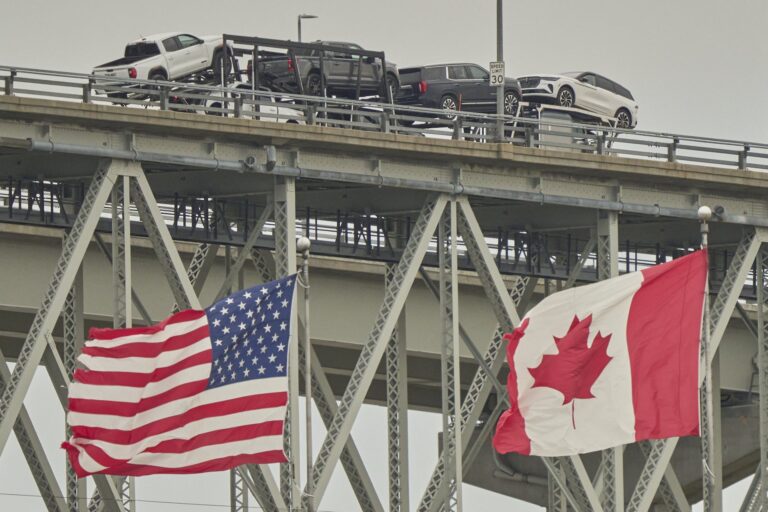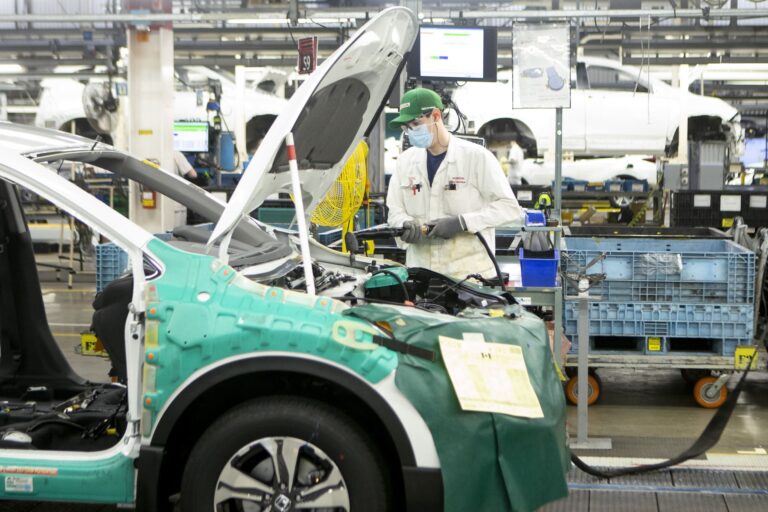Honda outlined on Thursday how it plans to maintain its manufacturing footprint in Canada, saying it will strategically swap assembly of its popular CR-V models between Ontario and Ohio as a way to navigate U.S. tariffs.
The company confirmed reports that it will transfer production of CR-Vs for sale in the U.S.—some of which are currently built at its plant in Alliston, Ont.—to its factory in East Liberty, Ohio. However, it will also shift some of its Ohio production to Canada: CR-Vs that were previously made in Ohio for foreign markets outside the U.S. will now instead be made in Canada.
Talking Points
The nearly one-to-one shift in production shows how U.S. policy is prompting automakers to repatriate manufacturing—but Canada is also becoming a free-trade hub between North America and other markets
It’s the clearest picture the company has provided to date on how it plans to fulfill its public pledge to maintain production in Canada even as U.S. President Donald Trump pressures automakers to move assembly to the U.S., using tariffs and other measures.
The strategy is likely to be closely watched by rival automakers, which are facing pressure from governments in both countries to invest in domestic manufacturing. It could also be a sign that Canada—and its barrier-free trade deals with many countries—is increasingly seen as a hub for business deals between North America and foreign markets.
Honda Canada spokesperson Ken Chiu said the number of CR-Vs made in both plants will be about the same as before. The swap won’t change the production volumes or employment in Canada, which will “continue to play a vital role in Honda’s North American operations.”
Chiu declined to disclose which foreign markets Honda will be targeting to sell Canadian-made CR-Vs. The model is the third-best selling SUV in the U.S., the second-best selling SUV in Canada and is also relatively popular in Brazil and Malaysia.
It may be cold comfort to fans of electric vehicles, and for Honda Canada’s home city of Alliston. Both groups must wait at least two extra years for Honda to fulfill its promised $15-billion investment in a new Canadian EV plant, after the company announced this week it is pausing the project. That plant was expected to get $5 billion in subsidies, including $2.5 billion from the federal government.
Still, Honda’s plan does preserve existing jobs, something other automakers have struggled to do amid punishing tariffs that add thousands to vehicle production costs. General Motors recently slashed 700 jobs from its pickup truck plant in Oshawa, Ont., as it cuts exports to the U.S.
Finance Canada said it could not confirm how many tax credits Honda had received in support of its EV-related expansion plan. The structure of the government’s deal with Honda suggests it’s unlikely the automaker got the full amount. One of the tax credits Honda was expected to redeem is not yet in effect, according to Finance Department deputy spokesperson Marie-France Faucher, while the other applies only to facilities and equipment that are available to operate—something Honda doesn’t expect before 2028.
Incoming Industry Minister Mélanie Joly’s office directed The Logic to her statement last night on social media, where the minister said Honda Canada’s CEO Dave Jamieson assured her that the company is fully committed to EV-related investments in the country.
Joly told reporters on Wednesday that she also had reached out to the CEOs of GM, Ford and Stellantis, and aims to speak with them before the end of the week.
Meanwhile, Finance Minister François-Philippe Champagne had an unplanned and lengthy chat Wednesday night with the newly appointed U.S. ambassador to Canada, Pete Hoekstra, at the B7, a business summit in Ottawa that sets the stage for the G7 leaders’ summit in June. The Logic spotted the two seated on a couch in a secluded corner of the Canadian Museum of History, two floors away from where Joly lamented the impact of the trade war on Canadian businesses.
“I’ll be making sure that I get involved in a new form of diplomacy,” said Joly, the former foreign affairs minister, “which is not necessarily the state, the state-to-state one, which we know well, but which is much more the state-to-CEOs, state-to-business. To make sure, ultimately, that we attract the right investments here.”
With files from Laura Osman in Ottawa


